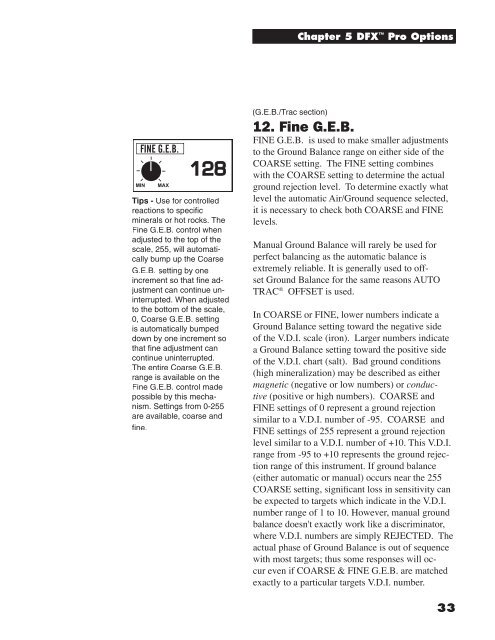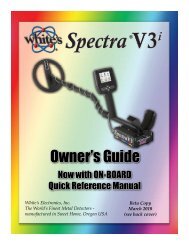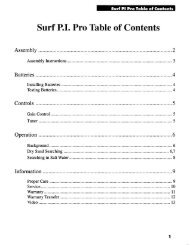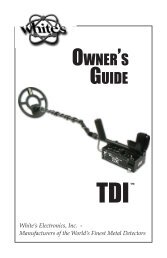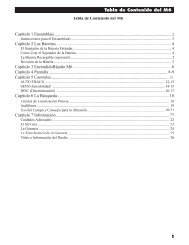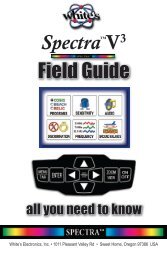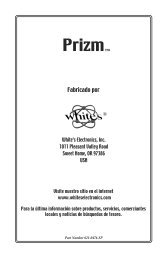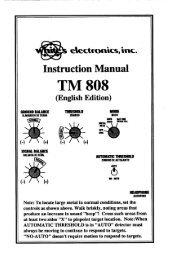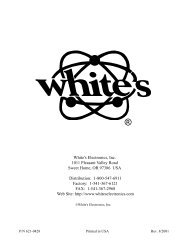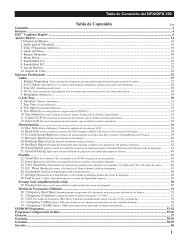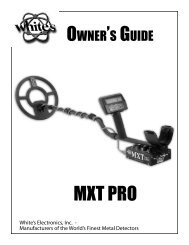DFX 300 Manual - White's Metal Detectors
DFX 300 Manual - White's Metal Detectors
DFX 300 Manual - White's Metal Detectors
Create successful ePaper yourself
Turn your PDF publications into a flip-book with our unique Google optimized e-Paper software.
Tips - Use for controlled<br />
reactions to specifi c<br />
minerals or hot rocks. The<br />
Fine G.E.B. control when<br />
adjusted to the top of the<br />
scale, 255, will automatically<br />
bump up the Coarse<br />
G.E.B. setting by one<br />
increment so that fi ne adjustment<br />
can continue uninterrupted.<br />
When adjusted<br />
to the bottom of the scale,<br />
0, Coarse G.E.B. setting<br />
is automatically bumped<br />
down by one increment so<br />
that fi ne adjustment can<br />
continue uninterrupted.<br />
The entire Coarse G.E.B.<br />
range is available on the<br />
Fine G.E.B. control made<br />
possible by this mechanism.<br />
Settings from 0-255<br />
are available, coarse and<br />
fi ne.<br />
(G.E.B./Trac section)<br />
Chapter 5 <strong>DFX</strong> Pro Options<br />
12. Fine G.E.B.<br />
FINE G.E.B. is used to make smaller adjustments<br />
to the Ground Balance range on either side of the<br />
COARSE setting. The FINE setting combines<br />
with the COARSE setting to determine the actual<br />
ground rejection level. To determine exactly what<br />
level the automatic Air/Ground sequence selected,<br />
it is necessary to check both COARSE and FINE<br />
levels.<br />
<strong>Manual</strong> Ground Balance will rarely be used for<br />
perfect balancing as the automatic balance is<br />
extremely reliable. It is generally used to offset<br />
Ground Balance for the same reasons AUTO<br />
TRAC ® OFFSET is used.<br />
In COARSE or FINE, lower numbers indicate a<br />
Ground Balance setting toward the negative side<br />
of the V.D.I. scale (iron). Larger numbers indicate<br />
a Ground Balance setting toward the positive side<br />
of the V.D.I. chart (salt). Bad ground conditions<br />
(high mineralization) may be described as either<br />
magnetic (negative or low numbers) or conductive<br />
(positive or high numbers). COARSE and<br />
FINE settings of 0 represent a ground rejection<br />
similar to a V.D.I. number of -95. COARSE and<br />
FINE settings of 255 represent a ground rejection<br />
level similar to a V.D.I. number of +10. This V.D.I.<br />
range from -95 to +10 represents the ground rejection<br />
range of this instrument. If ground balance<br />
(either automatic or manual) occurs near the 255<br />
COARSE setting, signifi cant loss in sensitivity can<br />
be expected to targets which indicate in the V.D.I.<br />
number range of 1 to 10. However, manual ground<br />
balance doesn't exactly work like a discriminator,<br />
where V.D.I. numbers are simply REJECTED. The<br />
actual phase of Ground Balance is out of sequence<br />
with most targets; thus some responses will occur<br />
even if COARSE & FINE G.E.B. are matched<br />
exactly to a particular targets V.D.I. number.<br />
33


